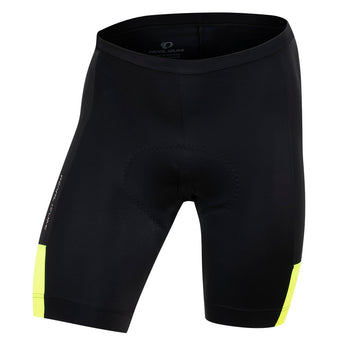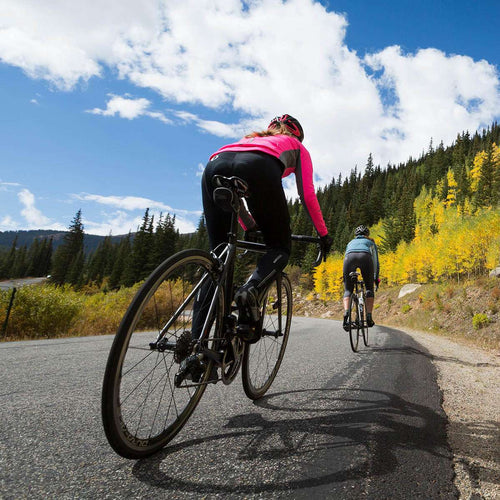Hello, class! And welcome to the next session of Chamois School. There tends to be a lot of confusion about what makes a great chamois and why they are so important, even to some experienced riders. I used to be one of them. You can bunny-hop over and read Chamois School 101 if you missed it. CS201 is a bit more detail on the bits that protect your bits so you can enjoy the ride.
Just so we’re clear, our men’s and women’s chamois are developed in parallel but are two separate engineering processes. Pearl Izumi doesn’t just change the shape of an existing chamois to make it a “women’s specific” version. A similar process of design, testing, refinement, and the resulting product takes months and even years to complete. There is no skimping to have both versions. This is important to us because it’s important to you. Now, let’s talk some details.


Kind of like the foundation of a building, the chamois is the beginning of everything we do when it comes to cycling apparel. When considering how to design a chamois you first need to know where to place the support for a rider in the first place. You wouldn’t just throw a chair pad from the dining room under your tush and pedal down the road. We needed to find out what was going on between the rider and the saddle. By using specialty pressure mapping sensors beneath riders on more than a dozen saddles, regardless of brand or style, our engineers are able to determine the highest points of pressure for male and female riders. Knowing which areas require the most support allows us to start with the most important areas and work from there.
Using that map, we are able to work with our chamois manufacturing partners of nearly 30 years to compose prototypes of single and multilayer foam. The ideal chamois will provide the right amount of support without losing that “ride feel,” that most experienced riders come to expect or add bulk to give you giant diaper. A thicker foam may not necessarily mean more comfort. It’s about having the right density of foam for that ideal support and the resiliency to endure the amount of time you’ll be riding. That is why we have multiple levels in our bib and short lines. The P.R.O. chamois has the best level of breathability, stretch, and resilience for those epic rides. While the ELITE level is still some of our best technology for breathability they come with a little less density in the foams to provide a plush ride for long rides. And the SELECT level is great chamois for those shorter rides that still require maximal function on the bike while not breaking the bank.
Pearl Izumi is one of the only apparel companies in cycling that is using a unique reticulated foam that provides the necessary breathability–let’s be honest it gets interesting down there on a hard ride–and the needed foam density to ensure the proper ride function. Many other brands’ chamois are a cocktail of foams and bonding processes that may end up sacrificing either breathability or foam resiliency. It’s taken us years working through hundreds of prototypes to get to our current recipe for success.


In addition to the right foam suspension, the best chamois needs to have exceptional wicking and breathability from the surrounding fabrics. Our unique top-sheet inverts the conventional chamois design and provides a completely smooth “floating” surface to your skin. The ability to sew the top and bottom layers only in the front and back of a chamois allows for the top-sheet to “float” and find a natural position against your body eliminating bunching and wrinkles. Say goodbye to chafing and even chamois cream. Seriously. Chamois cream can actually clog the natural holes within the foams and reduce breathability. Let’s not get into those kinds of details this time, that’ll be next time. The P.R.O. level chamois even have a special finishing treatment on the top-sheet to improve the wicking of moisture away from your skin. Wet skin leads to a few issues, including increased friction which can lead to some pretty uncomfortable situations–from chafing to saddle sores. It’s no way to have to ride and it certainly won’t be comfortable.
After all that thought and theory about where the foam should be and how much of it there needs to be, we make a small run of prototypes. These wannabe chamois will be stitched into shorts or bibs for some legit testing. Leveraging our wear tester program to confirm ideas that may look good on paper or on a screen takes hundreds of hours of ride time and a deep database of documentation. Those testers are active cyclists from a broad spectrum of styles and abilities so that we can be sure to make designs and improvements work as needed for the desired riding style. Sometimes testers come back to us and really dislike a prototype, sending us back to the drawing board. And that’s okay, we like honest feedback during development. A small number fall under the category of refinement, where an existing design just needs some improvement and added features or technology. After there is a majority of approvals on a prototype design from our ride testers, we will then work our way through the process of larger production runs that eventually end up on thepearlizumi.com and your local bike shop. And we’re so confident in our process we offer a limited lifetime guarantee.
So there you have it. Hopefully, a better understanding of what that oddly shaped thing in the shorts is all about and how our versions are different. Never forget, a bad chamois can ruin the best ride. It’s a very important bit within your shorts to protect your bits so you can focus on the ride.
Be on the lookout for the final installment, Chamois School 301, in a couple weeks. We’ll talk about how to take care of your new fancy chamois and some other tips to keep them at their best.










Comments